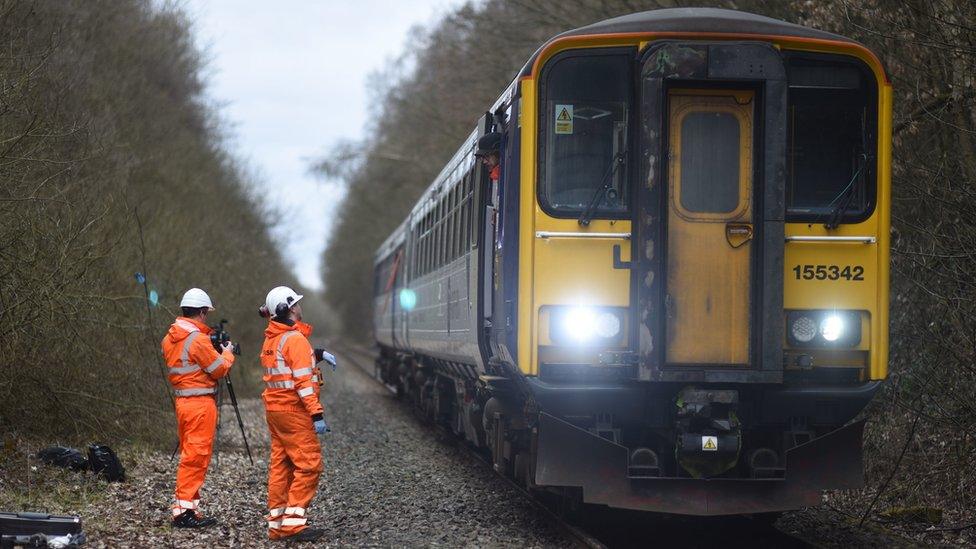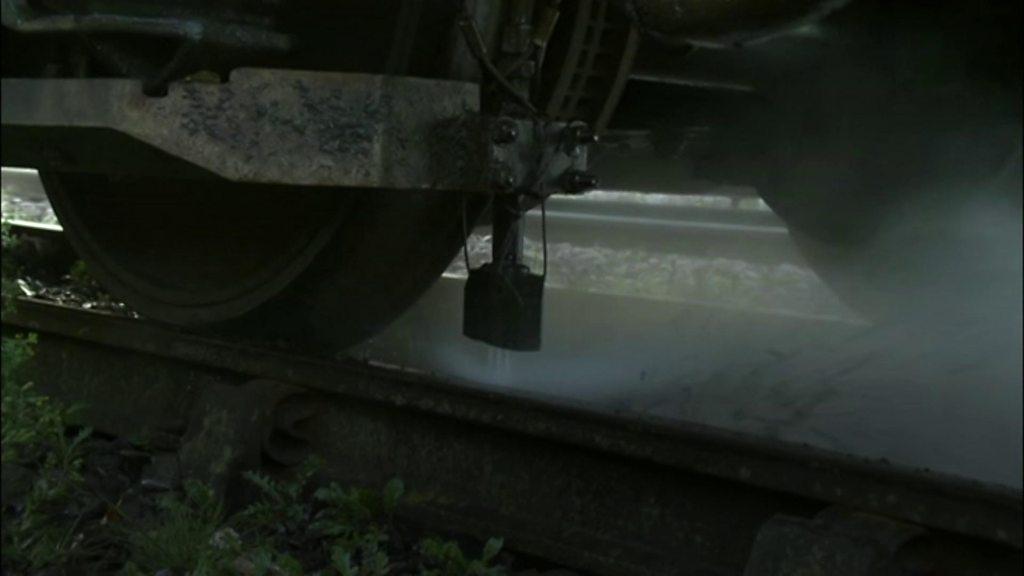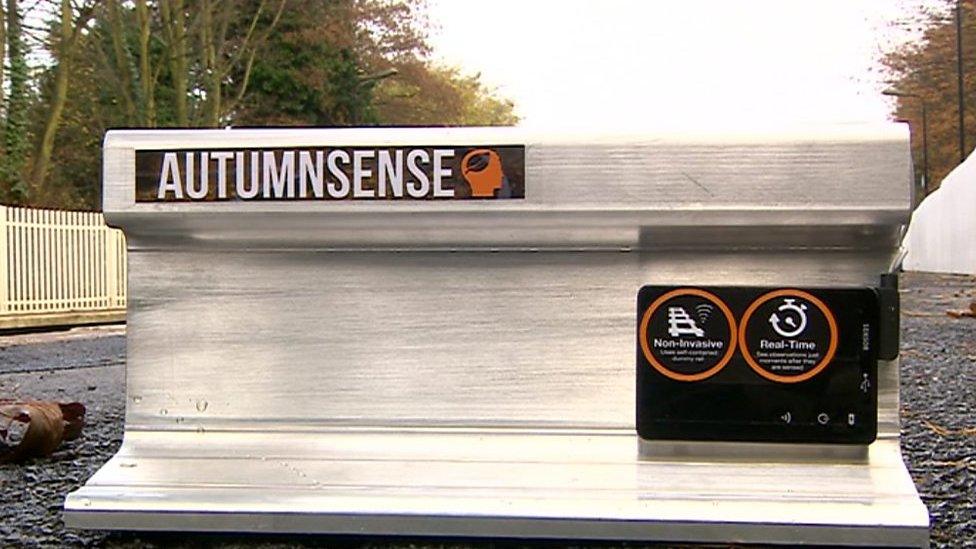Dry ice to help cut train delays caused by leaves on tracks
- Published
- comments

The technique will be trialled on Northern trains
A new way of removing leaves more efficiently from railway lines to reduce delays is to be trialled across northern England.
The technique, developed by University of Sheffield engineers, involves blasting tracks with dry ice from a passenger train.
It will be trialled by operator Northern in the coming weeks.
Leaves cause a slippery layer on railway lines, leading to delays as trains must run at slower speeds.
Under the new method, pellets of dry ice are fired in a stream of air, making leaves frozen and brittle.
The dry ice then quickly turns back into gas, causing it to expand and destroy the leaves.
At the moment, leaves are cleared by 61 special trains, which use high-pressure water jets followed by a gel containing sand and steel grains to help with braking.
The engineers behind the new system say their method is significantly more efficient as it can be used by passenger trains, which can cover greater distances than the limited fleet of cleaning trains.
It also does not leave a residue that can damage rails and train wheels, and can be used on the same stretch of track more than once a day.
The method has previously been trialled on test tracks and could be rolled out more widely by 2023.
Prof Roger Lewis, who is leading its development, said: "This technology will make a step change in train performance during autumn, improving safety.
"It will provide more predictable braking and traction than current technology, and will help to improve train performance, reduce delays, increase passenger satisfaction and support the use of new technologies to enable greater network utilisation of the UK's railways."
Rob Cummings, seasonal improvement manager at Northern, said: "One of the biggest risks to our performance during October and November is leaves on the line, but by helping to develop new technology we aim to deliver the very best service for our passengers."

Why do leaves on rail lines cause delays?

Autumn-related problems cost the rail industry approximately £345m a year
Around 10 million trees line Britain's railway, and thousands of tonnes of leaves fall onto the tracks every autumn
When they stick to damp rails, leaves have a similar effect to black ice on roads, creating a slippery layer
This means trains must run at a reduced speed, accelerate slower and brake earlier
A build-up of leaves can also make it harder for signallers to detect a train's location, which causes further delays

- Published20 November 2018

- Published14 October 2018

- Published30 November 2016
